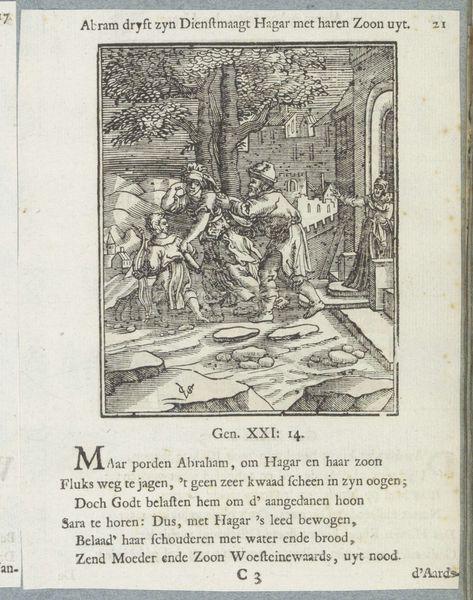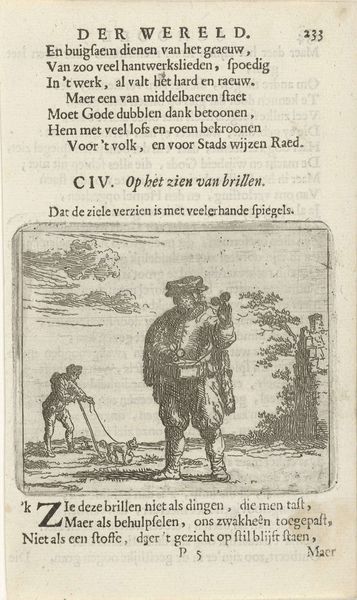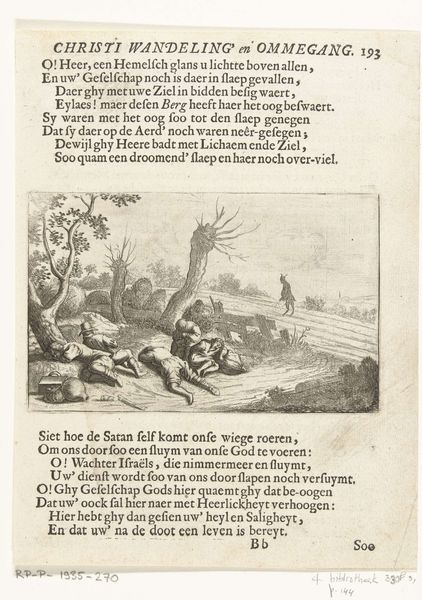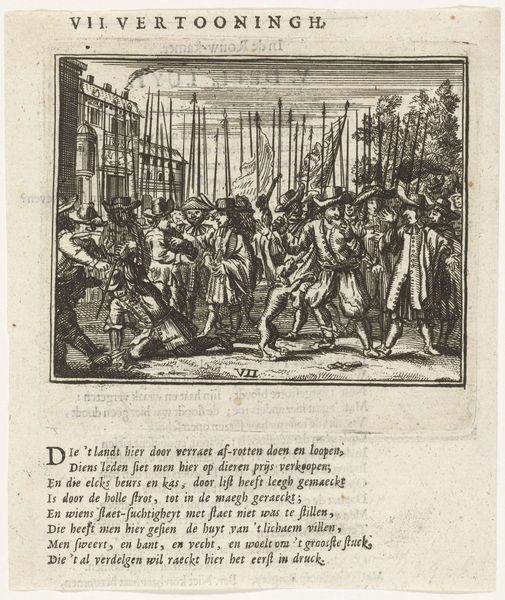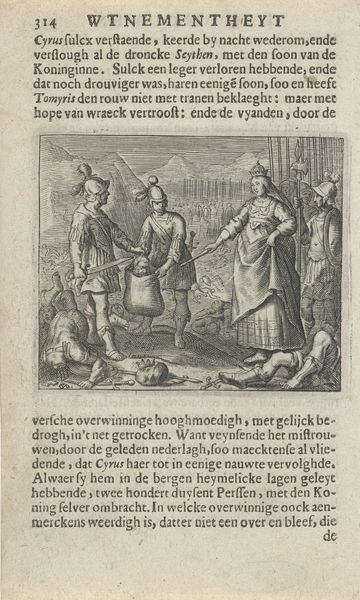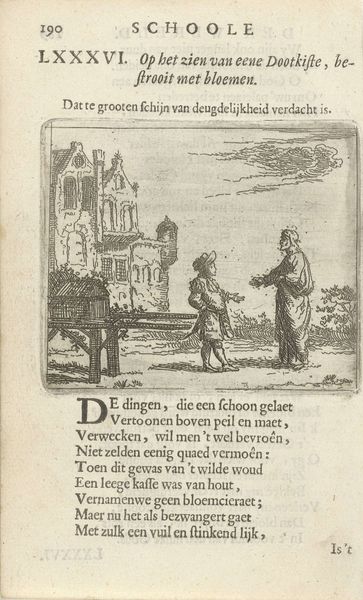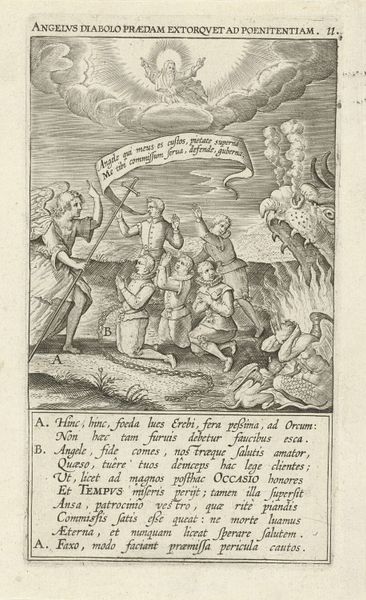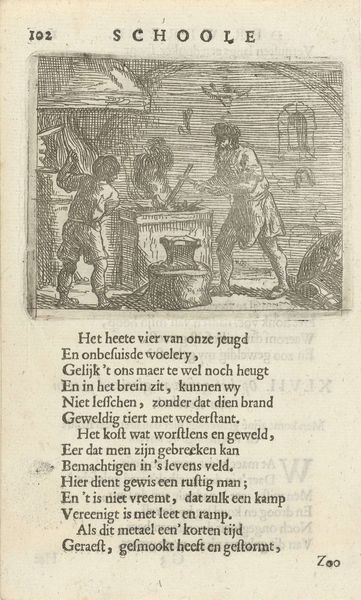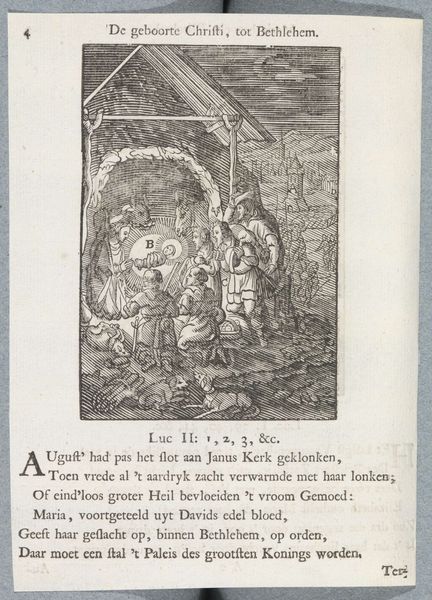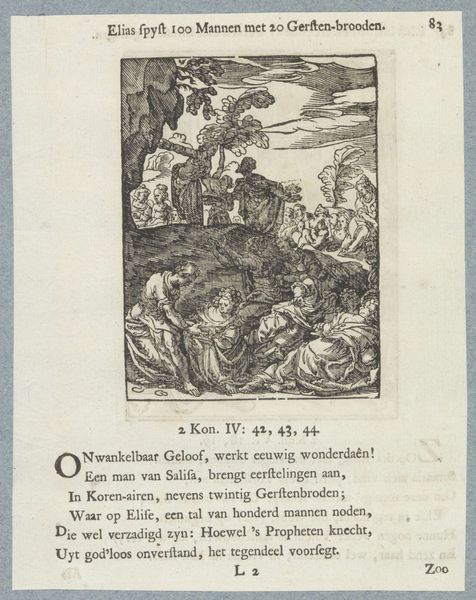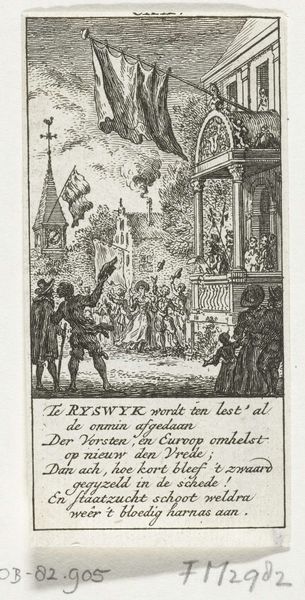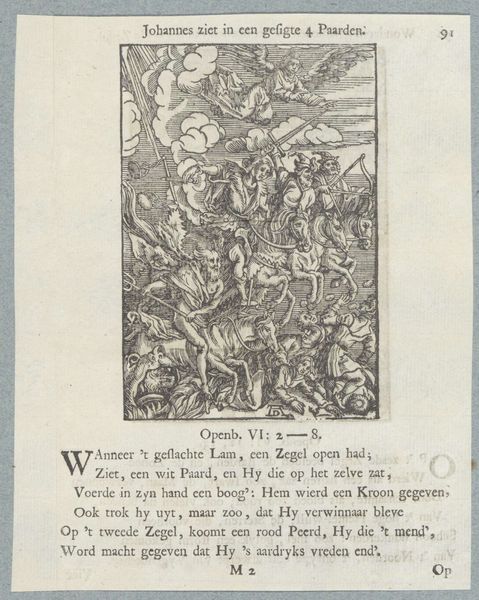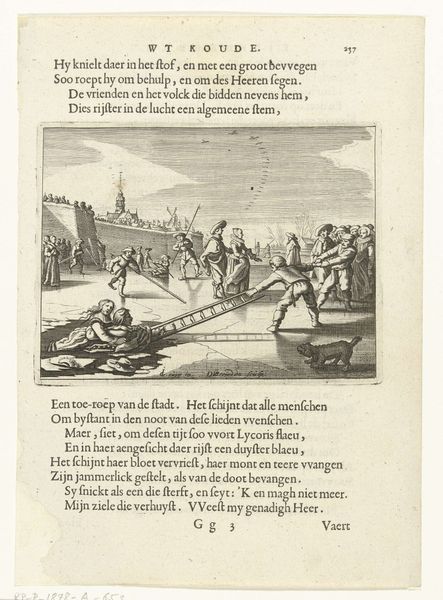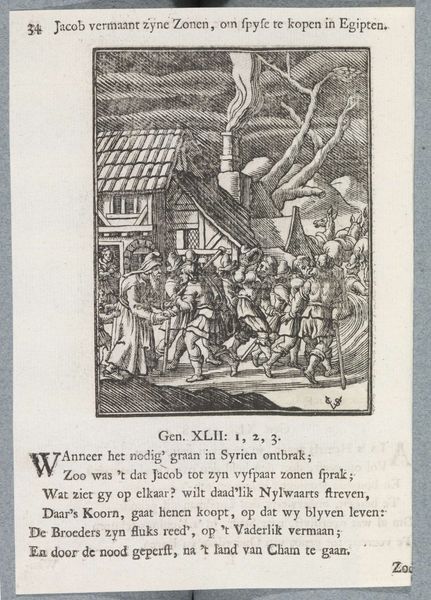
Strijd van de West-Friezen tegen de Hollanders onder leiding van Floris V, graaf van Holland, 1272 1658
0:00
0:00
print, engraving
#
baroque
# print
#
landscape
#
figuration
#
history-painting
#
engraving
Dimensions: height 64 mm, width 63 mm, height 132 mm, width 69 mm
Copyright: Rijks Museum: Open Domain
Curator: Welcome. We're standing before "Strijd van de West-Friezen tegen de Hollanders onder leiding van Floris V, graaf van Holland, 1272," or "Struggle of the West Frisians against the Hollanders led by Floris V, Count of Holland, 1272". Editor: What strikes me immediately is the density of line and form; the eye struggles to find a clear focal point amidst the chaos of battle. It feels almost deliberately overwhelming. Curator: This print, rendered by Hendrik Jacobsz Soeteboom in 1658, utilizes engraving techniques characteristic of the Baroque period. Look closely at how the lines, so intricately laid, create depth and a sense of movement, particularly in the rearing horses and battling figures. Editor: While I appreciate the technical skill, I can't help but think about what this imagery, depicting a struggle of Frisians against the Hollanders, means within a historical context. Consider the power dynamics, the narratives being constructed about regional identity and conflict. Was Soeteboom presenting a neutral depiction, or was there a subtle commentary embedded within this work, perhaps justifying later power structures? Curator: That’s interesting. To analyze from a more purely visual standpoint, I suggest studying the composition itself. Note the use of line to direct our gaze towards certain figures, but the dense, interwoven nature does not make this an obvious element. Are we meant to be confused or perhaps to notice and understand something through that disarray? The symbolism in their dress or how the horses, which take up quite some area of the plane, symbolize something larger? Editor: This reminds us that historical representation isn’t simply a recording of events, but it’s always an interpretation, shaped by contemporary values and the agendas of patrons, artists, and ultimately, those who control the narrative in books or through distribution of prints such as this. We need to investigate who benefited from propagating this particular image of the past. Curator: Examining its technical features makes one curious as to whether this was created to glorify or inform, even agitate, the print itself possessing no colour distracts the viewer from any sort of inherent emotive leaning; thus the work's technical features and lack of, give the opportunity to a non-leaning emotional expression of the scene. Editor: Indeed. By examining it closely, one finds themselves confronting not only its aesthetic components but also the intricate web of historical context it represents. Curator: And with a combination of social awareness and appreciation of material expression, a powerful interpretation of the historical past is constructed in the here and now.
Comments
No comments
Be the first to comment and join the conversation on the ultimate creative platform.
